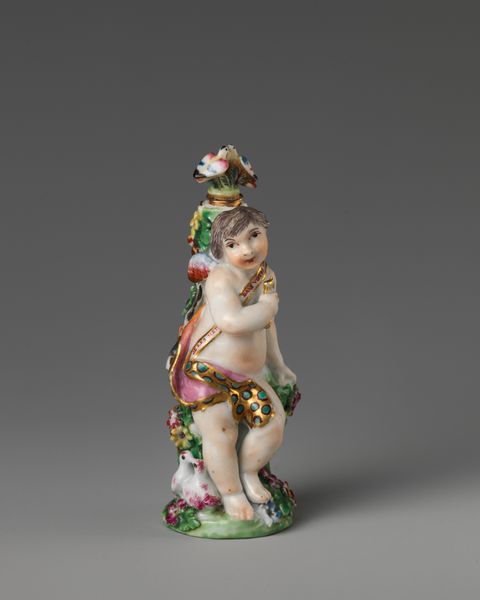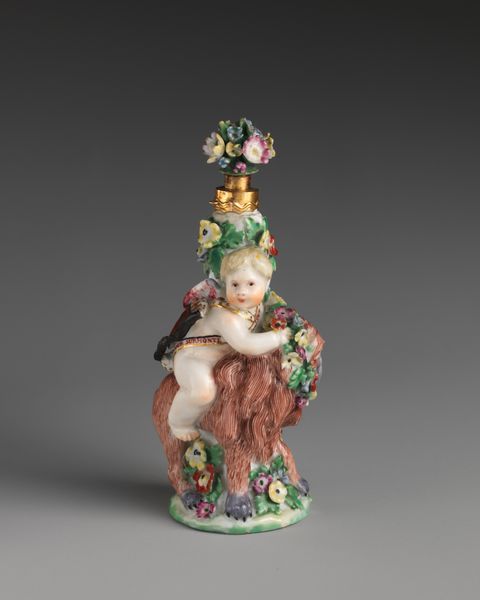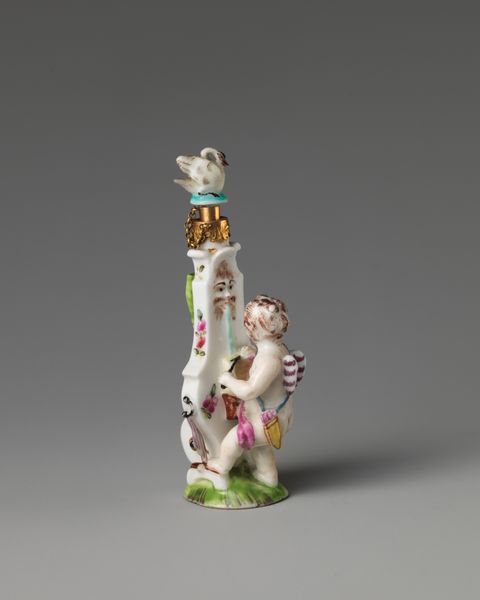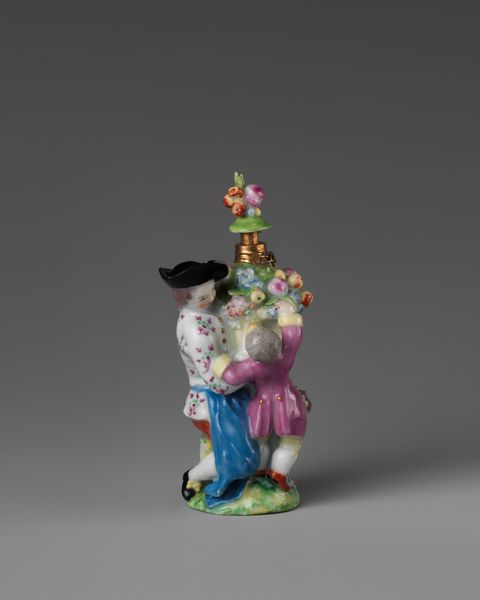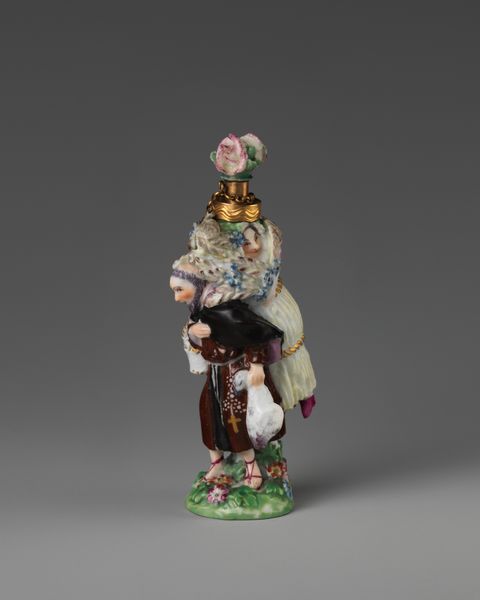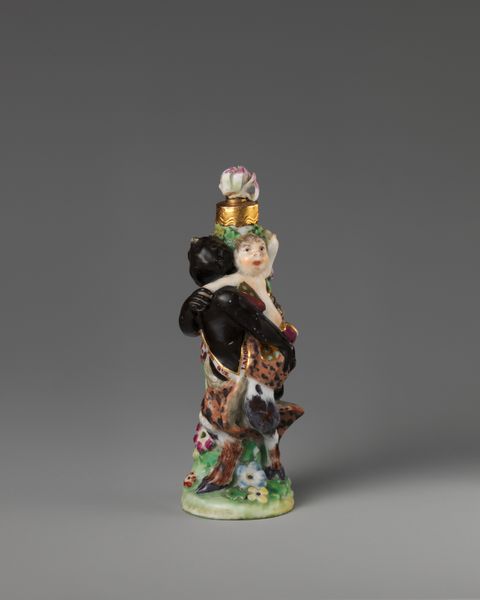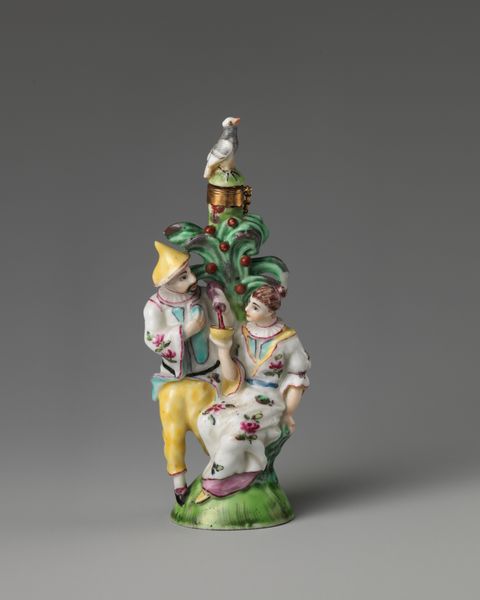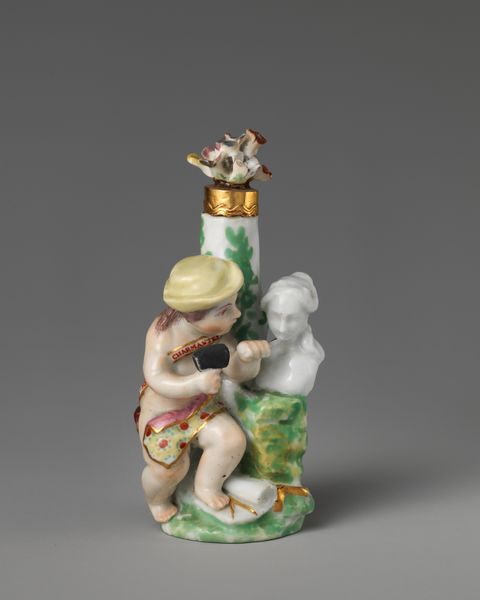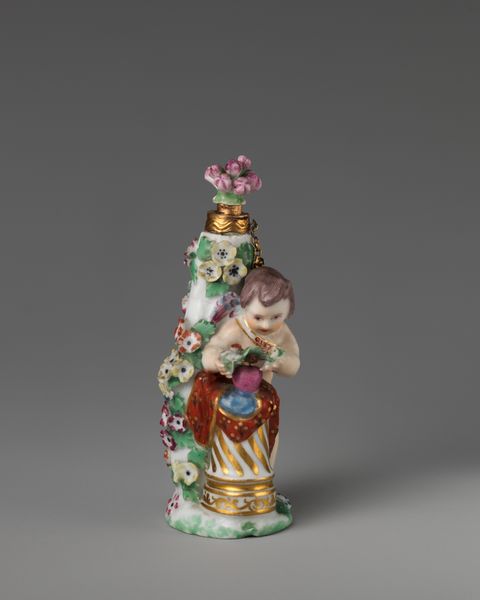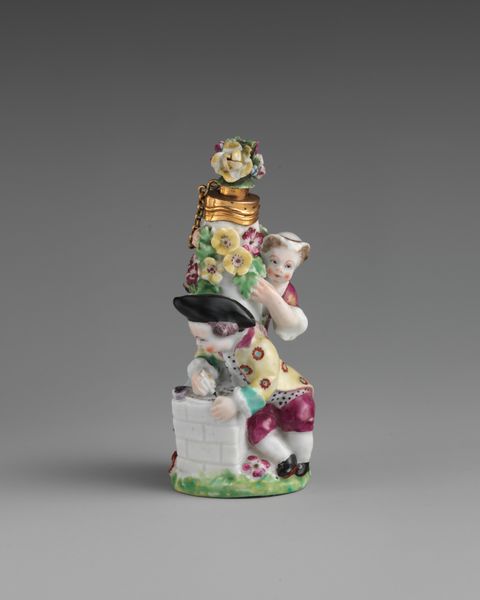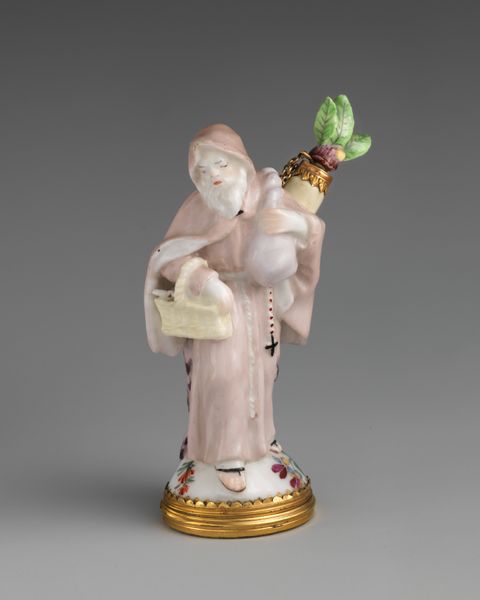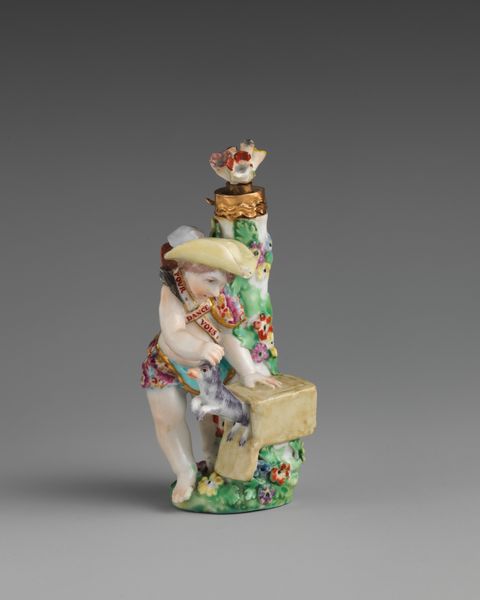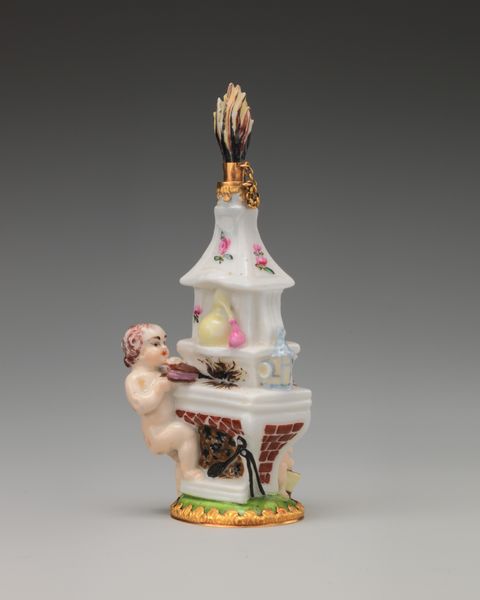
ceramic, porcelain, sculpture
#
ceramic
#
porcelain
#
figuration
#
sculpture
#
men
#
decorative-art
#
rococo
Dimensions: Overall: 3 1/2 × 1 3/4 in. (8.9 × 4.4 cm)
Copyright: Public Domain
Editor: This delightful porcelain sculpture, "Friar Carrying a Woman," created by the Chelsea Porcelain Manufactory between 1750 and 1760, presents an unusual image. The friar seems burdened, but also a bit mischievous. How do you interpret this work? Curator: Ah, indeed. Note how the artist uses seemingly innocent figures to portray complex societal undercurrents. The friar, traditionally a symbol of piety, is depicted carrying a woman whose elaborate hairstyle suggests vanity and perhaps, worldliness. The symbols speak to the shifting social landscape and anxieties of the time. Does the inclusion of the goose perhaps hint at folly or a clandestine journey? What emotional response does this grouping elicit from you? Editor: It feels satirical, almost poking fun at the church's role, but in a playful way, not aggressively. Is that a common reading? Curator: The Rococo era often veiled social critique within its decorative arts. Think about what symbols an audience might easily interpret, and which ones needed a level of cultural knowledge to be revealed. Notice the small details: the Friar’s half smile, her delicate but exaggerated hairstyle, how those are also symbols. It provokes a layered response, doesn’t it? Editor: Definitely! It makes me think about how artists can embed hidden messages into what seems like a pretty scene. Curator: Precisely! It is in this visual language that we find traces of cultural memory and how the social contract shapes our interpretations of these pieces across time. I am fascinated how it evokes these multiple and often conflicting ideas even now. Editor: I never would have noticed all that without your insights. I am beginning to consider porcelain very differently now.
Comments
No comments
Be the first to comment and join the conversation on the ultimate creative platform.
